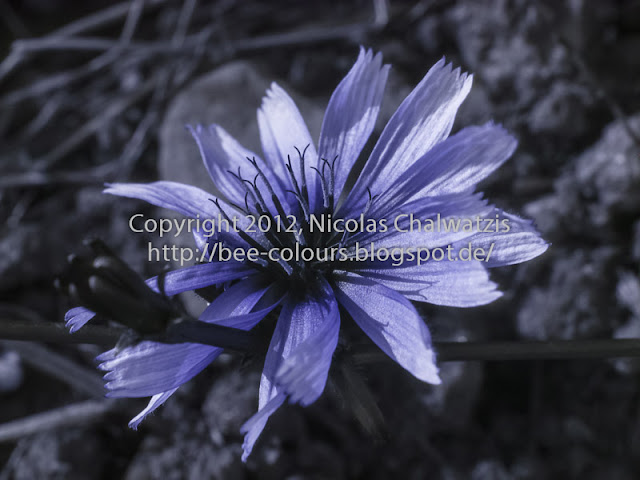Flowers were photographed near Bensheim, Germany 15 October 2012.
All images were taken with a broadband-modified Panasonic Lumix G1 and the EL-Nikkor 80mm/f5.6 at f8.
Visible light image with IR-neutralisation-filter ND (Optic Makario), ISO 100:

image reference: NCH_P1060273_120918
UV-image, Baader U-filter 2”, ISO 400, sunlight

image reference: NCH_P1060276_120918
“simulated bee-colours”: composite image of the greyscale converted UV image (-> blue) and the blue (-> green) and green (-> red) channel of the visible light image. The goal of this is to mimic the spectrum that bees and other insect-pollinators can see.

image reference: NCH_P1060275_RGB_sw_121015
Interestingly, the petals that appear blue with white centre parts in visible light are UV-dark in the center and get UV-brighter towards the tips. The filaments are also very UV-dark.
The simulated bee colours show a prominent bee-yellow centre that guides the pollinators.









